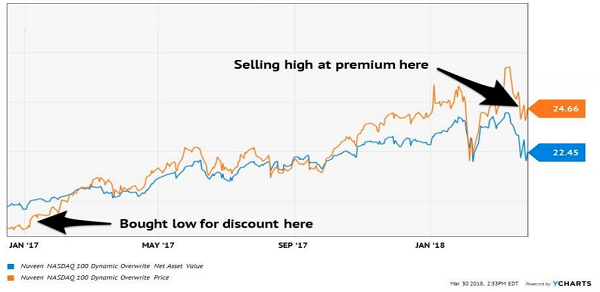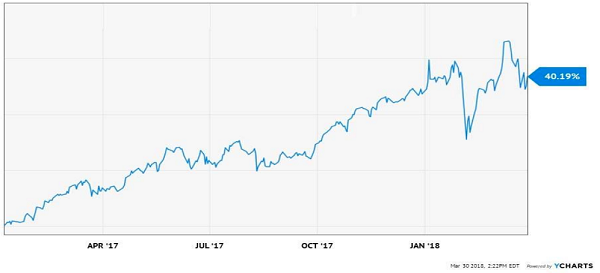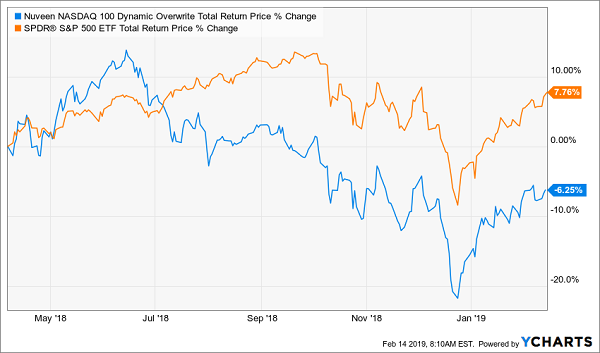
Shares of Walmart (NYSE:WMT) rose on Feb. 19, after the big-box retailer reported fourth-quarter numbers that largely topped expectations. Management also doubled down on a healthy fiscal 2020 guide that implies continued strength across the entire business. Walmart stock traded more than 3% higher in response to the news.

Source: Shutterstock
This rally has legs to keep going.
In the big picture, Walmart has rapidly transformed itself into an omnichannel retailer that is more than holding its own in the top retail dog fight with Amazon (NASDAQ:AMZN).
Many of the company’s new growth initiatives, including e-commerce enhancements and product expansions, are still in their early innings and will continue to drive healthy growth over the next several years. Plus, the company’s acquisition of Flipkart puts Walmart front and center of the world’s hottest and fastest growing consumer retail market.
Overall, there’s a lot to like about Walmart stock in the long run. Current fundamentals imply that Walmart can and will continue to grow revenues and profits at a healthy rate over the next several years. If so, then that means Walmart stock has runway to $115 in calendar 2019.
As such, buyers here won’t be disappointed. The rally in Walmart stock is far from over.
Fourth-Quarter Earnings Underscore Enduring Strengths
When it comes to retail, two things matter most: price and convenience. Those two things never stop mattering most, either. Consumers always want low prices. They also always want high convenience. Thus, so long as a retailer dominates on price and convenience, that retailer will succeed.
Walmart has been the poster child for low prices and high convenience for a long time. But, Amazon (and e-commerce in general) threatened Walmart’s dominance in those categories by making things cheaper, and by allowing consumers to buy those things from their computers or phones. Walmart naturally lost market share.
But, over the past several quarters, Walmart has adapted. They’ve slashed prices and built out a robust e-commerce business that includes things like “buy online, pick up in store”. As such, Walmart has regained a shared dominance with Amazon on the price and convenience fronts, and Walmart’s numbers have consequently improved.
In the fourth quarter, comparable sales rose 4.2%. That’s a strong mark for any retailer, especially one of Walmart’s size. On a two-year stack basis, comparable sales rose nearly 7%, and that’s the best mark in nine years for Walmart. Traffic growth is positive. Ticket growth is positive. E-commerce growth is red hot. On top of all that, margins are rising, too, for the first time in a long while, as improved top-line results are allowing for expense leverage.
Overall, through developing a robust omnichannel business, Walmart has regained dominance on the price and convenience fronts, and in so doing, has recharged growth throughout the whole business.
Walmart Stock Has More Upside Left
At current levels, Walmart stock has room to move higher over the next several months as revenues and margins move higher, too.
In fiscal 2019, comparable sales rose 3.6%, the best comp mark in years for this company. Next year, comparable sales growth is expected to slow, but not by much (2.75%). Also, revenue growth is expected to remain stable at a multi-year high of 3%-plus. Digital sales growth is guided to remain north of 30%. Margins are expected to move higher, too, excluding one-offs.
In sum, the growth narrative at Walmart is simply getting better. This is turning back into a low single-digit revenue and comparable sales growth narrative with gradually improving margins. Established market growth will inevitably slow over the next several years as current growth initiatives mature. But, such slowing growth will likely be offset by a developing market ramp, especially in India.
As such, Walmart will remain a low single-digit revenue growth company with gradually improving margins for the foreseeable future. Under those modeling assumptions, $7.80 in earnings-per-share seems achievable by fiscal 2025. Based on a historically average 20 forward multiple, that equates to a fiscal 2024 price target of $156. Discounted back by 8% per year (2 points below my average 10% discount rate to account for the yield), that equates to a fiscal 2020 price target for Walmart stock of roughly $115.
Bottom Line on WMT Stock
Walmart has regained its dominance on the price and convenience fronts. So long as Walmart maintains this dominance, the numbers will remain good, and the stock will head higher. Under reasonable growth assumptions, Walmart stock should move towards $115 over the next twelve months.
As of this writing, Luke Lango was long WMT and AMZN.
Source: Investor Place




